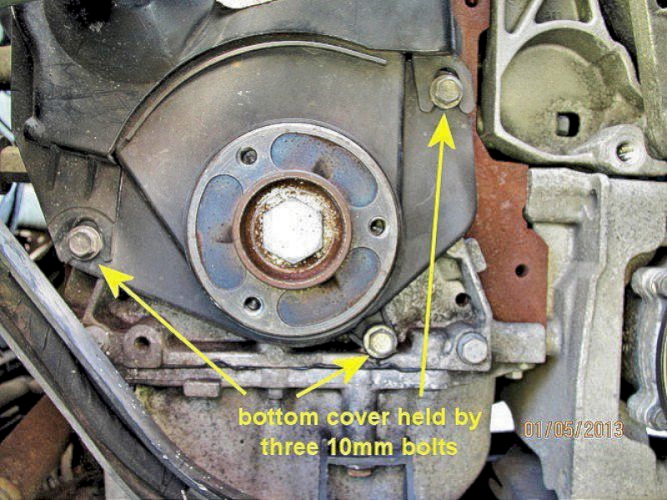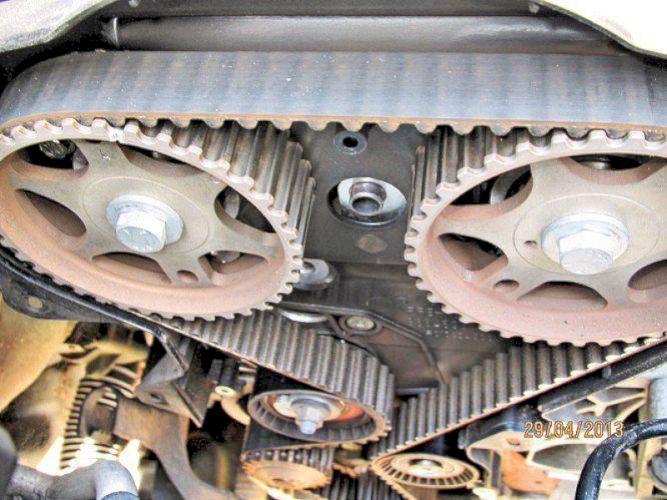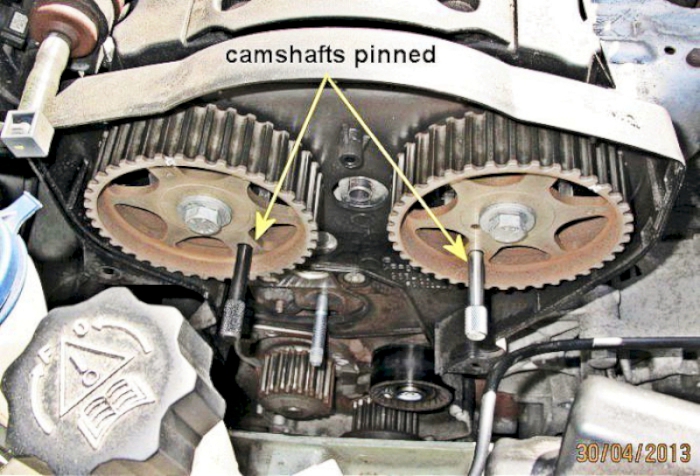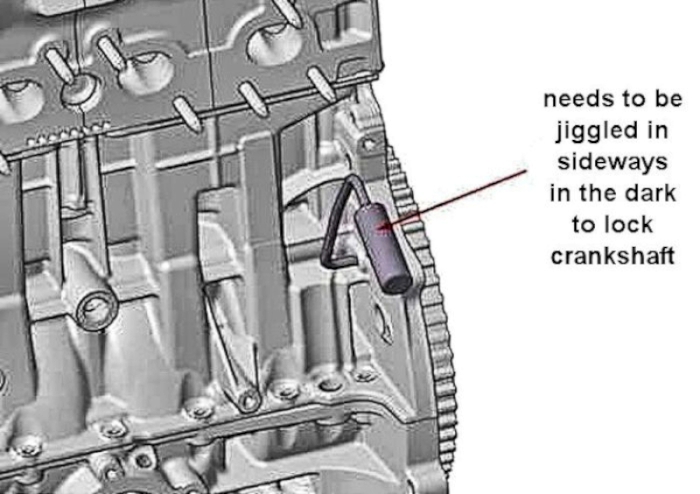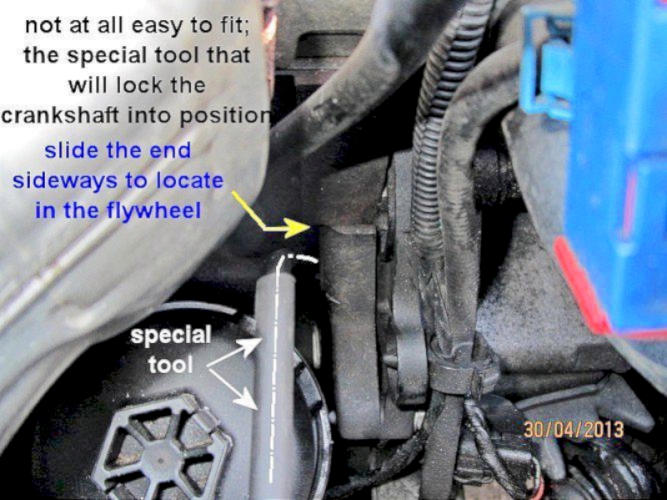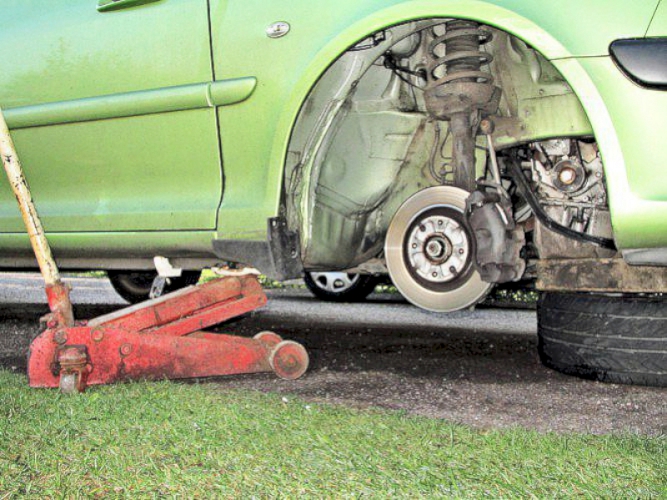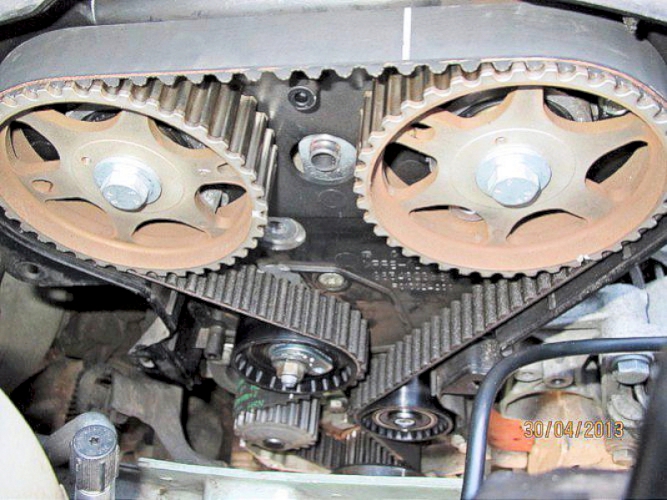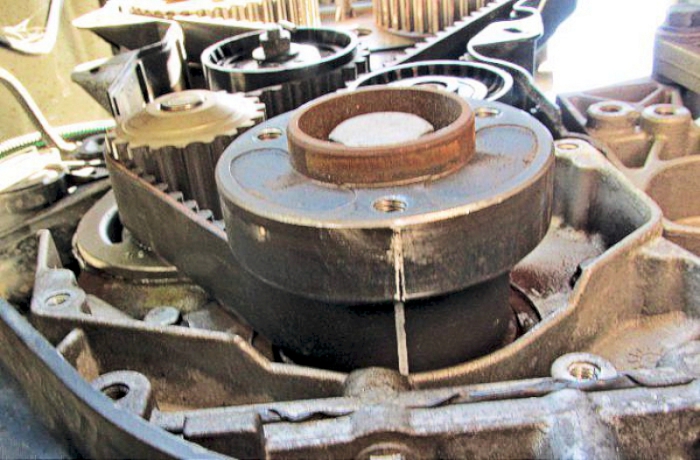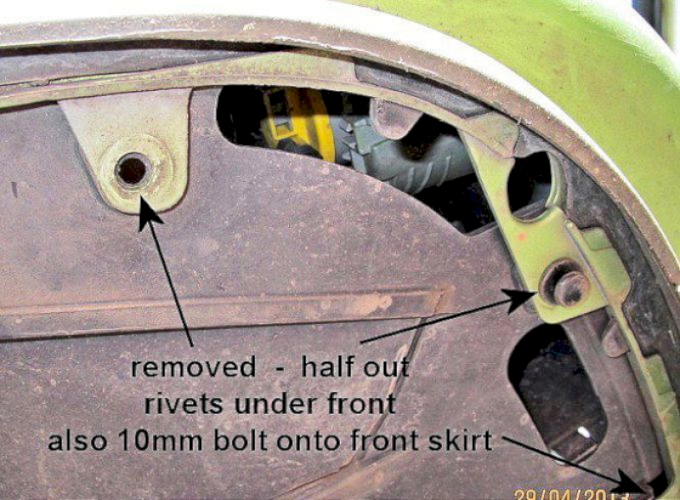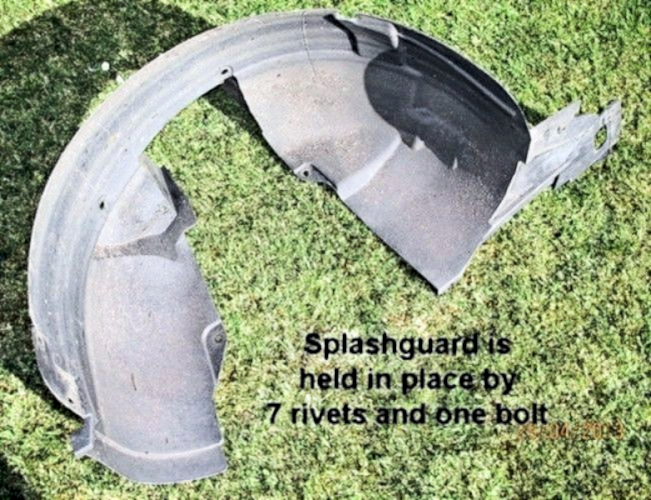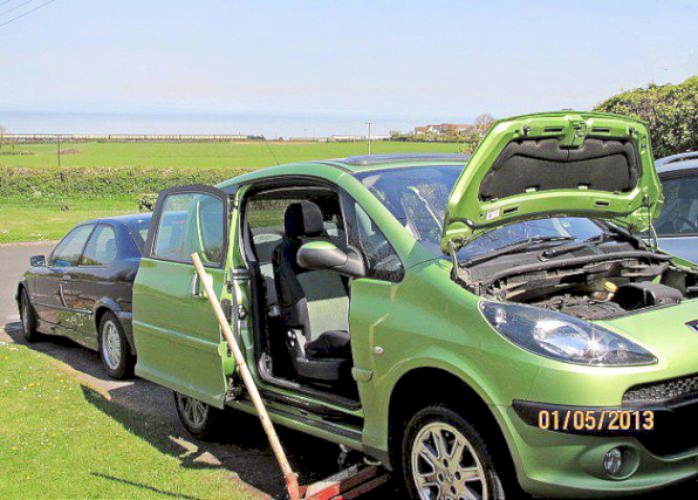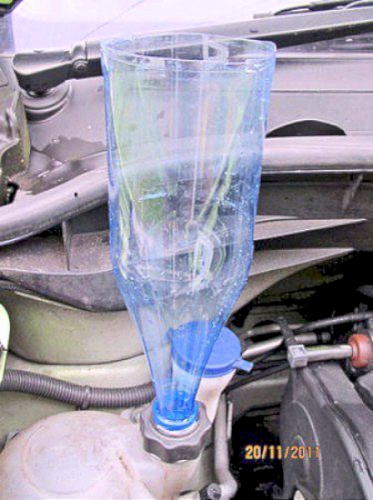
Auxiliary & Cam Belts
1.6 petrol
Replacing the 7 year old cam belt on the 2006 1.6 16-valve petrol:
at 42,000 miles the cam belt was in perfect condition - it looked like new.
however the two idler pulleys were showing signs of deterioration; the idler had lost its grease and was rattling; the tensioner pulley sounded slightly uneven. The water pump appeared to be in good condition.
in addition, the aux belt was showing signs of wear but the aux idler pulley had lost its grease and was very loose and rattly.
the assembly might have run to 50,000 miles, however the condition of the two idlers would have caused increasing concern.

The workshop requires a fine sunny day with no wind - which eventually arrived after a very long winter

The Splashguard is held in place by eight plastic push-pin rivets and one 10mm bolt at the front skirt

The auxiliary belt drives the a/c compressor and alternator; I found the idler pulley was dry and rattling
note that the alternator and air con. compressor are fixed and belt tension is maintained by the sprung idler pulley
Release the pressure on the aux belt (by turning the central bolt) until the belt will slide off.
Check the shock absorbing rubber drive in the crank pulley by marking Tipp-ex or chalk across the two parts (not done here). If the marks move apart then you can see at once.

Remove the aux belt; the lower cam belt cover (three 10mm bolts) and the aux belt tensioner (one 13mm bolt and one allen key)

Support the engine securely to take the load off the engine support bracket - I used a fixed floor support and raised/lowered the car slightly on the jack

Remove the top cam belt cover (six 6mm recessed captive self tappers) - some are quite fiddly to get to as they are close to the chassis

Turn the engine (22mm socket on the crank bolt) and pin the crankshaft and both camshafts so they cannot move (I used a Sealey VS4935 petrol engine timing kit)

Bit of a fiddle in the dark depths, but use some patience (and maybe a bright torch and long lever to help)
remove the belt, tensioner and idler pulleys; also the water pump if this is to be changed (recommended)

Fit the new water pump (with new rubber seal); tensioner (with locking pin) and idler pulleys.
Fit the new belt (make sure the tensioner is locked and fully back or it won't go on!)

The new belt has marks which should line up with the marks on the crank and both camshafts as a quick check that they are properly timed. At TDC the mark on the crank pulley appears to be vertically downwards.
Note that, once the crank is turned, these marks won't line up again as the number of teeth on the crank pulley doesn't exactly divide into the number of teeth of the belt.

remove the locking pin and set the tensioner (using an allen key in the tensioner) so the pointer lines up with the notch.
This ensures an accurate tension is maintained on the belt. Tighten the locking nut to maintain this setting.

Do check and recheck (by rotating the crankshaft an even number of times and pinning the crank and camshafts again) that nothing has slipped.
Then start the engine and it should run - keep fingers well out of the engine bay! Check that the tensioner pointer is still in the notch (there may be a small movement, but the pointer should still remain within the notch).

Refit the top and bottom belt covers.
Refit the aux tensioner followed by the belt and run the engine again - keep fingers well out of the way!
Reassemble the other parts in reverse order - hopefully no parts left over?

Don't forget to replace the antifreeze if you have replaced the water pump.
Take off the air filter assembly and refill the water reservoir - I used this device made up from an empty drinks bottle and old reservoir cap as you will need a head of water above the reservoir to fill the heater matrix.
There are two small black plastic bleed caps - on one of the heater pipes near the bulkhead and on the thermostat itself. Adjust the heater to supply maximum heat to ensure the heater valve is open, but keep the fan very low or the engine will never warm up!
Fill the reservoir, start the engine and remove the bleed caps one at a time. Close the caps when there are no more air bubbles coming out. Keep filling the filler until the reservoir is up to the full mark and allow the engine to run up to temperature; recheck the reservoir level and that there are no leaks. It can take a while to bleed so be patient and check after the first (very short) run.
VERDICT:
at 42,000 miles (but 7 years, remember) the cam belt was in perfect condition - it looked almost new.
however the two idler pulleys were showing signs of deterioration; the idler had lost its grease and was rattling; the tensioner pulley sounded slightly uneven. The water pump appeared to be in good condition.
in addition, the aux belt was showing signs of wear and the aux idler pulley had lost its grease and was slightly loose and rattly
SUMMARY:
the assembly might have run to 50,000 miles, however the condition of the two idlers would have caused increasing concern.


